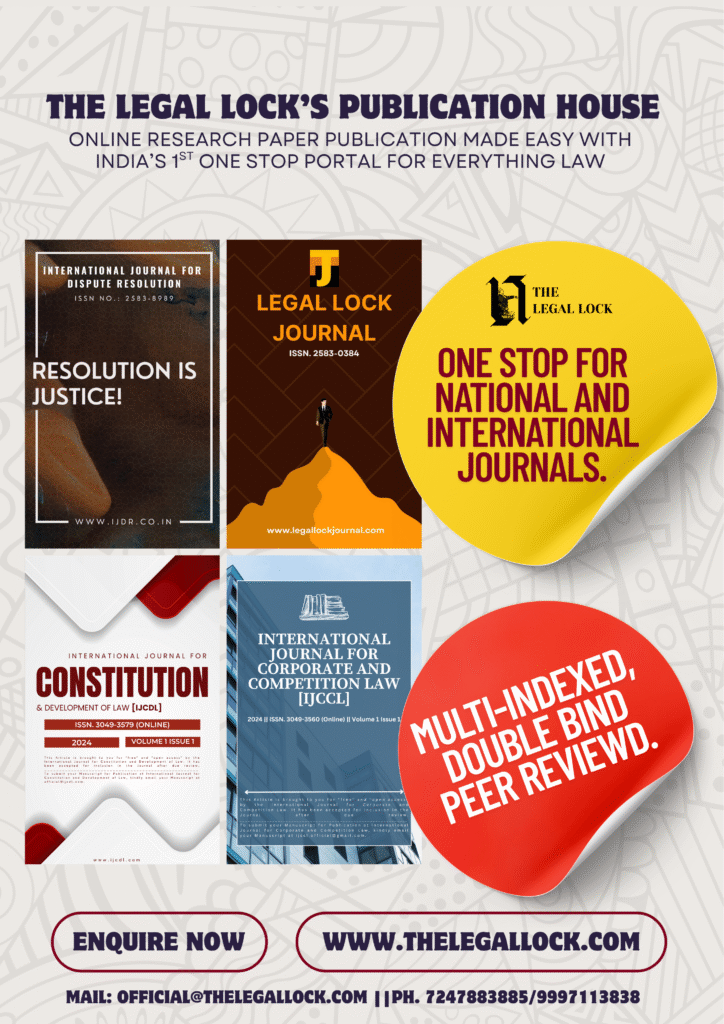Right to Information Act, 2005: RTI Chapter VI Analysis & Key Provisions

INTRODUCTION
The Right to Information Act of 2005 is an important milestone in encouraging accountability and openness. This law improves governance and promotes democratic engagement by providing citizens with access to government information. It requires public entities to respond to applications for information within a specified periods of time, which empowers underprivileged groups and combats corruption. RTI Chapter VI strengthens these principles by outlining key provisions that ensure transparency.
Chapter VI extends from Sections 21 to 31 and includes miscellaneous provisions. These cover defenses, overriding effect, and non-application of the Act. It also addresses the bar of jurisdiction, monitoring, and reporting. Additionally, it includes appropriate government powers and rule-making authority. Other provisions involve the laying of rules and the power to remove difficulties.
Successive to Chapter VI, the Act annexes two Schedules. Schedule I provides the oath/affirmation form for various Information Commissioners. It aligns with Sections 13(3) and 16(3) of the Act. Schedule II, as per Section 24, lists intelligence and security organizations.These organizations are established by the Central Government of India. The Right to Information Act does not apply to them.
CHAPTER VI
Protection Under Section 21
Section 21 of the Right to Information Act provides crucial protection to individuals acting in good faith under its provisions. It ensures no legal action, including suits or prosecutions, can be initiated for actions performed under the Act. This applies to both actions taken and those intended under the Act or its rules. The safeguard fosters confidence among public officials and citizens. It encourages accessing and sharing information without fear of reprisal.
Section 22 underscores the overarching authority of the Act over any conflicting laws or regulations. It asserts that the Act’s provisions hold precedence over inconsistencies in the Official Secrets Act of 1923 or other laws. This ensures the right to access information prevails over secrecy laws or statutes that hinder transparency and accountability.
CBSE v. Aditya Bandopadhyay
In the case of CBSE v. Aditya Bandopadhyay, the Court held that Section 22 of the RTI Act states its provisions prevail over other laws. Thus, examining bodies must provide evaluated answer-books unless exempt under section 8(1)(e). This does not establish a fiduciary relationship with examinees. Courts ruled that answer sheets are information accessible under RTI.[i]
Restriction on Court Jurisdiction, Exemptions for Intelligence and Security Organizations
Furthermore, Section 23 restricts the jurisdiction of courts concerning orders made under the Act. It states that no court can entertain suits, applications, or legal proceedings related to such orders. The only exception is through the appeal process specified within the Act itself. This limitation aims to streamline the resolution of disputes arising from the Act’s implementation. It also prevents unnecessary legal challenges that could hinder transparency and citizen empowerment.
Section 24 of the Act outlines exemptions for certain intelligence and security organizations established by the Central or State Governments. These organizations, listed in the Second Schedule of the Act, are exempted from its provisions. The only exceptions are cases involving allegations of corruption or human rights violations. In such instances, information must be disclosed with approval from the Central Information Commission for central agencies. For state agencies, approval must come from the State Information Commission. Despite these exemptions, the Act mandates disclosure of information related to corruption or human rights abuses within forty-five days. This requirement bypasses the usual thirty-day response limit specified in Section 7 of the Act.
Modifications to the Second Schedule
The Central Government retains the authority to modify the Second Schedule by notification in the Official Gazette, either including new organizations or removing existing ones. Each notification issued under this provision must be presented before both Houses of Parliament for scrutiny and acknowledgment.
State Governments can specify intelligence and security organizations exempt from the Act through notifications in their Official Gazettes. As with central agencies, information on corruption allegations or human rights violations must be disclosed with State Information Commission approval. This disclosure must occur within the specified forty-five-day timeframe. Section 25 of the Right to Information Act mandates a monitoring and reporting framework to ensure effective implementation and accountability.
Monitoring and Reporting Under Section 25
Annually, the Central or State Information Commission submits a detailed report to the respective government. This report documents the Act’s application and outcomes throughout the year. It serves as a critical evaluation tool, highlighting key aspects like the number of information requests received. It also details cases where access was denied, the frequency of appeals, and their resolutions.
Additionally, the report includes disclosures on disciplinary actions against officials for mishandling RTI requests. It also provides details of charges collected by public authorities for providing information. The report assesses efforts by public bodies to uphold the Act’s principles and intentions. This aims to foster greater transparency and accountability.
Moreover, these annual reports are instrumental in recommending reforms to enhance the Act’s effectiveness. Recommendations cover diverse areas, including legislative amendments, administrative improvements, and the modernization of practices to better facilitate the public’s right to access information. The Central or State Governments subsequently present these reports to their respective legislative houses, ensuring parliamentary check and facilitating informed debates on further legislative measures or policy modifications.
Furthermore, if the Central or State Information Commission identifies discrepancies between a public authority’s practices and the Act’s mandate or underlying principles, it issues recommendations for corrective actions. These recommendations are crucial in promoting conformity and reinforcing the Act’s spirit across all levels of governance.
Public Awareness and Implementation Under Section 26
Section 26 outlines the responsibilities of the appropriate Government in facilitating public awareness and effective implementation of the Act. Firstly, it empowers the Government to develop educational programs aimed at enhancing public understanding, especially among disadvantaged communities, regarding their rights under the Act. These programs are pivotal in empowering citizens to effectively exercise their right to access information held by public authorities.
Furthermore, the Government is tasked with encouraging public authorities to actively participate in and organize educational initiatives. This includes promoting the timely and accurate dissemination of information about their activities, fostering transparency and accountability in governance practices.
Moreover, Section 26 mandates the training of Central Public Information Officers and State Public Information Officers, equipping them with the necessary skills to handle information requests efficiently. The development and distribution of relevant training materials further support public authorities in complying with the Act’s provisions and enhancing accessibility for citizens seeking information.
In addition to educational efforts, the Government is required, within eighteen months of the Act’s commencement, to compile a comprehensive guide in the official language. This guide aims to provide easily understandable information essential for individuals wishing to exercise their rights under the Act. It covers various aspects, including the objectives of the Act, contact details of information officers, procedures for filing information requests, available assistance from information commissions, legal remedies, fee structures, and guidelines for voluntary disclosure of records.
Rule-Making Power Under Sections 27 and 28
Section 27 provides for the appropriate Government to enact rules through notification in the Official Gazette to facilitate the effective implementation of the Act. These rules are instrumental in providing operational guidelines across various facets of the RTI framework. Specifically, they address critical aspects such as determining the cost of mediums or print materials for disseminating information under Section 4(4), establishing fees payable for filing requests under Section 6(1), and processing fees under
Sections 7(1) and 7(5) for accessing information. Additionally, the rules outline the tenure, salaries, allowances, and conditions of service for Chief Information Commissioners, Information Commissioners, and their staff as detailed in Sections 13 and 16.
They also prescribe procedures for handling appeals to ensure consistency and efficiency in the adjudication process by the Central and State Information Commissions under Section 19(10). Furthermore, the rules encompass any other necessary matters essential for enforcing the RTI Act comprehensively.
Similar to Section 27, Section 28 grants authority to competent authorities to establish rules through notifications in the Official Gazette. These rules primarily focus on the cost of disseminating information, fees for information requests and appeals, and any additional matters that require regulation as per the Act’s requirements.
Parliamentary Oversight Under Section 29
Section 29 outlines the parliamentary oversight mechanism for rules formulated by the Central Government. It mandates that all rules must be presented before both Houses of Parliament for scrutiny during their sessions. If Parliament suggests modifications or decides against the rule, the modified version will be enforced or the rule annulled, while maintaining the validity of actions taken under the original rule.
In case of challenges in implementing the Act, Section 30 provides the Central Government with the authority to issue orders through the Official Gazette to address such difficulties. These orders must align with the Act’s provisions and are subject to parliamentary review to ensure transparency and accountability in their application.
Section 31 repeals the earlier Freedom of Information Act, 2002, consolidating the legal framework under the RTI Act, 2005, as the definitive legislation governing public access to government information in India.
CONCLUSION
Chapter VI of the Right to Information Act encompasses crucial provisions ranging from defences to the Act’s overriding effect on conflicting laws, ensuring robust implementation and accountability. Schedule I outlines oaths for key officials, while Schedule II exempts certain intelligence organizations from disclosure, barring cases of corruption or rights abuses. The Act mandates monitoring and annual reporting by Information Commissions, fostering transparency. It empowers governments to educate the public, train information officers, and enact rules for effective implementation. Parliamentary oversight ensures legislative integrity, underscoring the Act’s role in promoting accessible governance and public empowerment in India.
[i] CBSE v. Aditya Bandopadhyay, (2011) 8 SCC 497.








